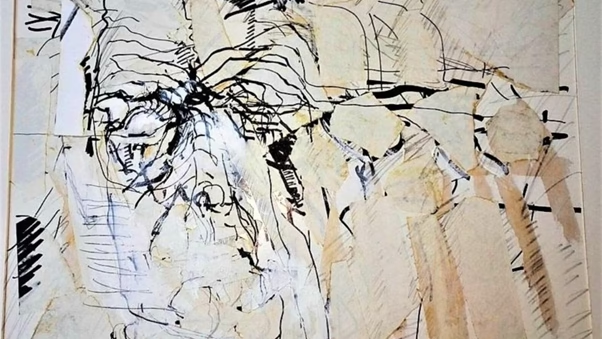The phrase "Art Battle Won" perfectly encapsulates the successful effort to secure these masterpieces: The Irish Cultural Centre (ICC) in Hammersmith, London, has achieved a significant milestone by permanently enhancing its collection. The Centre secured three unique portraits depicting Irish literary giants: James Joyce, Samuel Beckett, and Brendan Behan.
Intriguingly, these newly acquired works are not by an Irish artist at all, but instead originate from the late Swedish painter and illustrator Carl Köhler (d. 2006). This unusual pairing of subject and artist lends the collection a distinctly international significance. The donation was successfully secured through a complex, modern, and transatlantic negotiation process that notably originated on social media. Underscoring the dynamic role of digital connection in worldwide arts acquisitions today. Ultimately, this acquisition dramatically strengthens the ICC's position as a major cultural hub dedicated to Irish literary heritage outside of Ireland.
The Story of the Acquisition
The portraits came to the ICC after its new chairman, Peter Power-Hynes, spotted a tweet from Köhler’s son, Henry Köhler. Henry was seeking a suitable, permanent Irish home for his father's portrait of Samuel Beckett. This online interaction led to the ICC successfully acquiring not only the Beckett portrait, but also those of James Joyce and Brendan Behan, despite competition from institutions like Trinity College.

A Tribute to Irish Literary Heritage
ICC Chairman Peter Power-Hynes praised the acquisition. He called the donation a "very generous gesture." The portraits came from Henry Köhler and his sister Frida. They represented the Carl Köhler Foundation. This was more than a simple transaction. The gift strongly supports the ICC's mission. It honors Ireland's rich heritage. The portraits found a fitting, permanent home. They stand as major cultural works.
Carl Köhler: The Neo-Modernist Portraitist
Carl Köhler (1919–2006) was a Swedish neo-modernist painter who gained significant recognition, particularly for his psychologically charged "authorportraits." His artistic life was intensely devoted to literature, music, and dance, with his background steeped in the arts—his father was a visual artist and his mother a concert hall singer and pianist.
Köhler's deep engagement with the works of the writers he painted allowed him to move "Beyond the Words" and attempt to capture the essential, inner identity of his subjects. As he himself explained, he was often searching for "the overtones of a visage, the poetic dimension."
The Artist's Vision: Technique and Psychological Depth
Carl Köhler was a Neo-Modernist who constantly challenged traditional portraiture, using his art to delve into the psychological and poetic dimensions of his subjects. His unique methodology—termed "authorportraits"—elevated him from simple illustrator to a profound commentator on the creative mind.
An Unconventional Methodology
Köhler's works are defined by their mixed-media approach, deliberately eschewing conventional painting surfaces for an unconventional combination of ink, collage, and often oil or acrylic on paper.
- Idiosyncratic Combination: Köhler favored dynamic drawing and rough, gestural strokes, but anchored them using collage.
- Textured Canvas: The artist frequently glued slivers of paper, sometimes incorporating elements like sheet music (as he did for a portrait of Bach). Or other ephemera, to create a richly textured, uneven surface. This textural depth ensures the finished portrait feels both determinedly vital and tactile.
- Cubist Influence: This assimilation of collage into his work directly reflects Köhler's exposure to Synthetic Cubism—specifically the works of masters like Picasso and Braque—during his studies in Paris in the 1950s. The technique breaks down the subject's face into planes and layers, thereby presenting a fragmented, modern perspective.
Capturing the 'Inner Person'
Köhler aimed to capture the "fragile look" or "vulnerable characters" of the great minds he studied. He firmly believed his unique talent lay in "seeing the inner person" beneath the physical features.
Conclusively, his portrait of James Joyce stands as a powerful testament to this ambition. Köhler dedicated an entire series to the Ulysses author, actively tracking the progression of Joyce's tragic loss of sight. Consequently, this work captures the figure's face in a fragmented and deconstructed manner, intentionally forcing the viewer into a visual disorientation that approximates Joyce's failing vision. Thus emphasizing the writer's creative essence over a mere physical likeness.
A Permanent Home for a Worldwide Legacy
Köhler's son, Henry, has dedicated himself to promoting his father’s work since his death. Seeing it as a unique talent that was "far too interesting" to remain forgotten. Consequently, this mission has already led to successful international exhibitions at major literary and university institutions across North America, including the Brooklyn Public Library and the University of Toronto.
The dramatic conclusion of this long effort came when the Art Battle Won phrase became reality: the permanent acquisition by the ICC marks a significant milestone in cementing the artist's legacy. Specifically, the ICC's status as a major cultural institution in Europe ensures Köhler’s work will be viewed by a diverse international audience. The portraits are now on permanent display at the ICC’s striking modern building in west London, which already serves as the most extensive and diverse hub for Irish culture outside of Ireland, thereby providing a fitting and lasting tribute to both the Swedish artist and three of the nation’s greatest writers.
